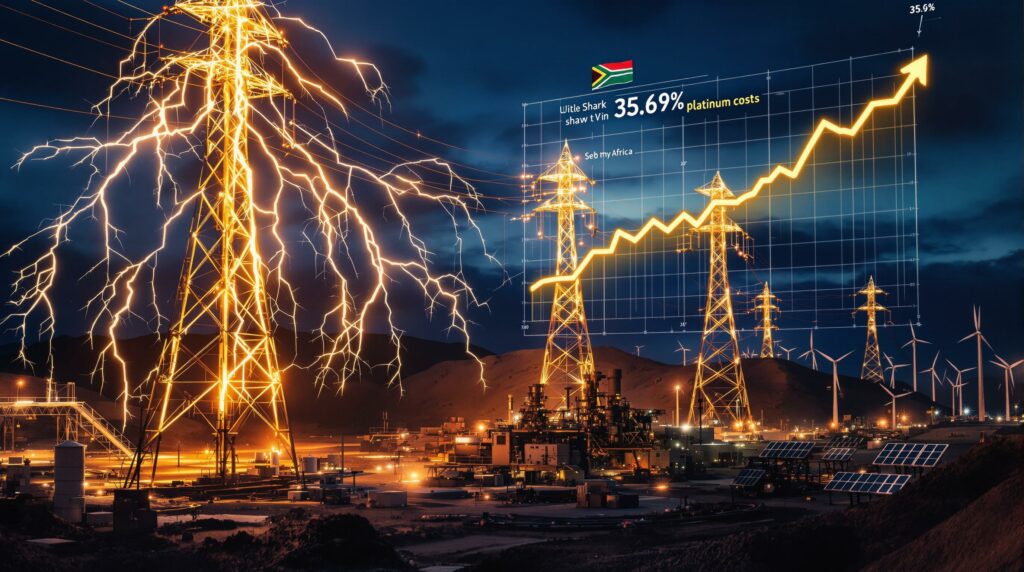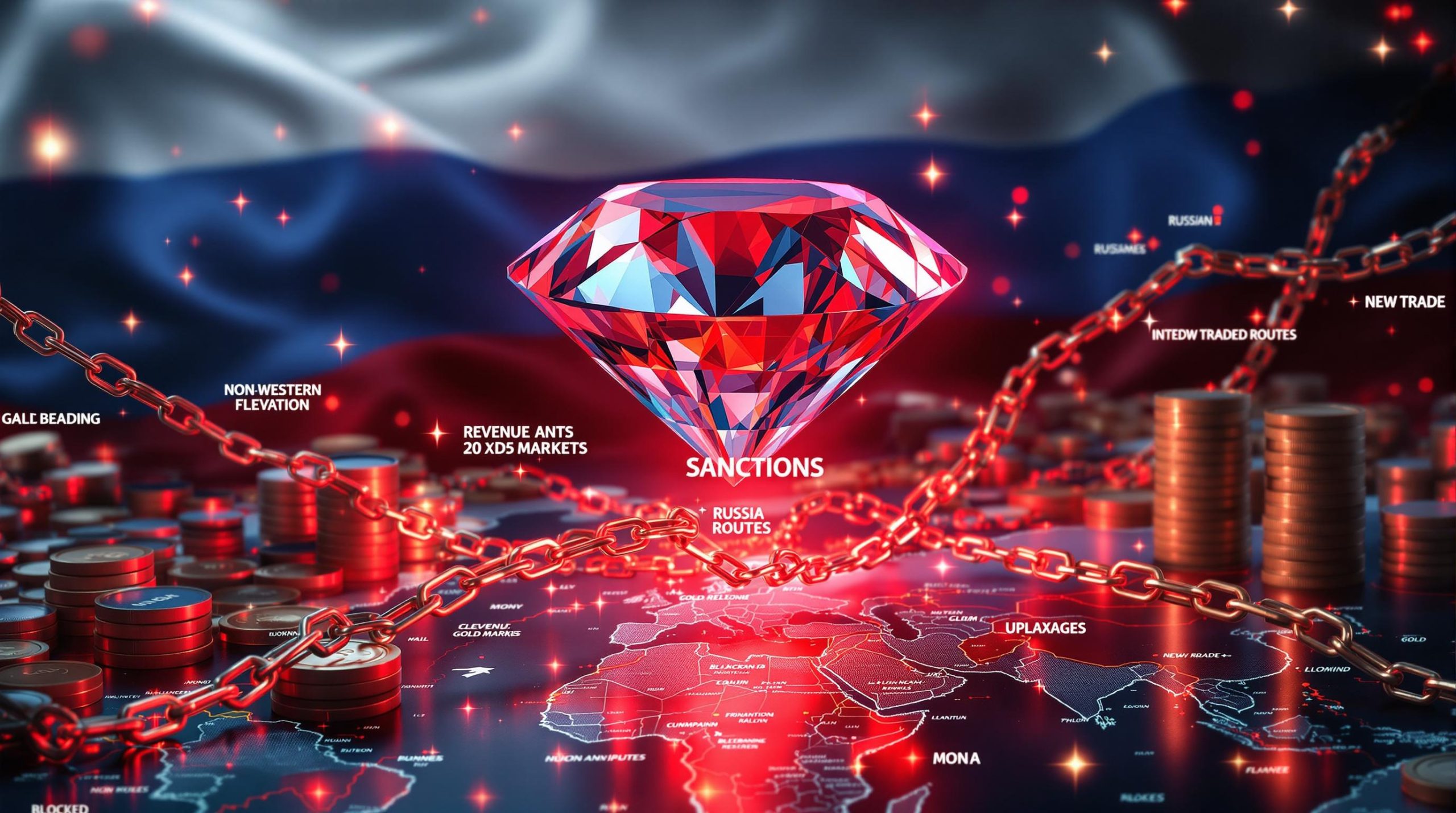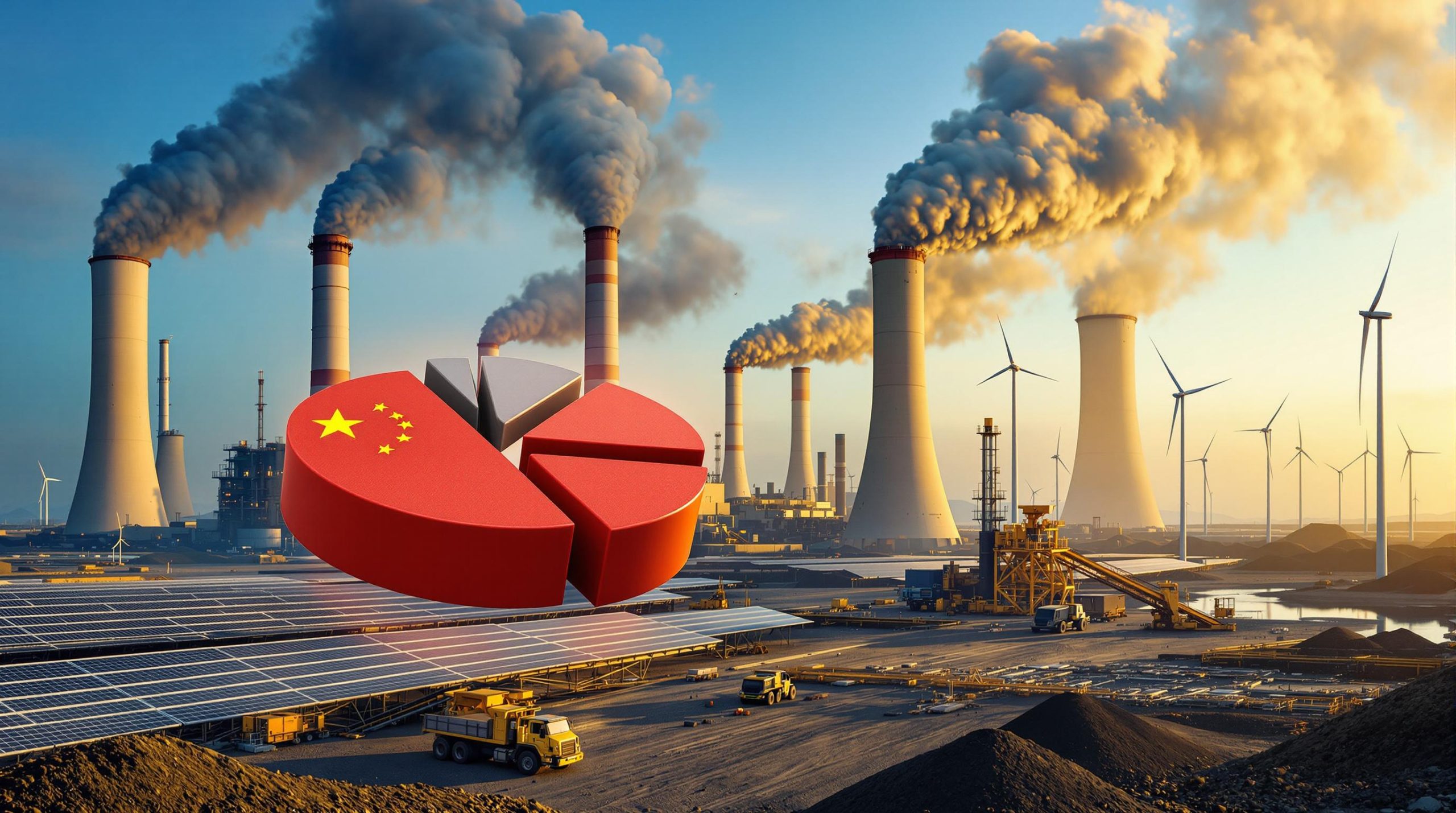Mining Input Costs Rise as Eskom Winter Electricity Tariffs Take Effect
Mining operations across South Africa are feeling the impact of rising input costs, with the latest data revealing an upward trend driven primarily by Eskom's winter electricity tariffs. The mining sector faces unique challenges as these seasonal price hikes coincide with other input cost pressures, creating a complex economic landscape for industry players.
How Have Mining Input Costs Changed in 2025?
The South African mining sector has experienced a notable shift in input costs during 2025, with several key indicators pointing toward increasing financial pressure on operations. Recent data shows a measurable acceleration in cost growth compared to earlier periods.
The Mining Composite Input (MCI) Cost Index rose by 1.4% year-on-year in June 2025, up from 1.1% in May. This uptick follows a similar pattern in the broader Producer Price Index (PPI) for Final Manufactured Goods, which increased by 0.6% in June, following a more modest 0.1% increase the previous month.
From a quarterly perspective, the trend becomes even clearer. Input costs climbed to 1.4% in Q2 2025 from 0.9% in Q1, though these figures remain significantly lower than the 2.9% recorded in Q2 2024 during the post-pandemic recovery period.
According to André Lourens, Economist at Minerals Council South Africa, "Mining input costs rose in June, driven by a sharp increase in electricity production and distribution costs after the start of Eskom's winter pricing period."
When excluding labor costs from the equation, the MCI Cost Index declined by 0.2% year-on-year in June—still showing deflationary pressure, but at a slower pace than the 0.7% drop recorded in May. This suggests that non-labor inputs are beginning to exert more upward pressure on overall costs.
| Month/Quarter | MCI Year-on-Year | PPI MoM | Notable Shift |
|---|---|---|---|
| May 2025 | 1.1% | 0.1% | Pre-winter tariff |
| June 2025 | 1.4% | 0.6% | Tariffs begin |
| Q1 2025 | 0.9% | – | Recovery phase |
| Q2 2025 | 1.4% | – | Cost pressures rise |
| Q2 2024 | 2.9% | – | Post-pandemic high |
How Do Eskom's Winter Electricity Tariffs Affect Mining Operations?
The most significant driver behind June's rising input costs was undoubtedly the activation of Eskom's winter electricity tariffs. These seasonal rate increases, which began in mid-June for large industrial consumers, had an immediate and substantial impact on mining operations across the country.
Electricity production and distribution costs surged by an astonishing 35.9% month-on-month in June 2025. This sharp increase represents just the beginning of the winter tariff period, which runs until mid-September. Industry analysts anticipate even greater cost pressures in July, which will be the first full month under these elevated tariffs.
Energy-intensive operations bear the brunt of these increased costs. Underground mining requires significant electricity for ventilation, water pumping, and hoisting systems, while processing plants, smelters, and refineries depend heavily on consistent power for their operations.
"For companies operating energy intensive underground mines, processing plants, smelters and refineries, electricity is increasingly a significant cost item," notes André Lourens of Minerals Council South Africa.
The mining industry has responded with several strategic approaches:
- In-house renewable energy development – Many larger mining houses are investing in renewable energy solutions to reduce grid dependency
- Third-party wheeling agreements – Contracts with independent power producers to supply electricity at more competitive rates
- Operational adjustments – Reducing electricity consumption during peak tariff periods and implementing energy efficiency programs
These winter tariffs create particular challenges for continuous operations like smelters and refineries, which cannot easily reduce power consumption without compromising production. For these facilities, the financial impact is especially significant, with electricity often representing 25-40% of operating costs during peak tariff periods.
Which Other Mining Input Costs Shifted in June 2025?
While electricity costs dominated the headlines, several other input categories experienced notable shifts in June 2025, creating a mixed cost environment for mining operations.
Rubber products saw a significant price increase, rising 3.4% month-on-month. This jump was primarily driven by higher tyre prices, which impact everything from haul trucks to underground mining equipment. Given the specialized nature of mining tyres and their essential role in operations, these price increases cannot easily be absorbed or avoided.
In contrast, chemical and man-made fiber inputs provided some relief, decreasing by 3.9% month-on-month in June. This reduction helped to partially offset increases in other categories, though the overall trend remained inflationary.
The varying movements across input categories highlight the complex cost environment facing mining operations:
| Input Category | % Change May–June 2025 | Notable Cause |
|---|---|---|
| Electricity (production/distribution) | +35.9% | Eskom winter tariffs |
| Rubber products | +3.4% | Tyre price increases |
| Other chemicals/man-made fibres | -3.9% | Lower demand/prices |
When labor costs are excluded from the analysis, the overall input cost picture shows slight deflation, with the index declining by 0.2% year-on-year. However, this represents a slower deflationary pace compared to May's 0.7% drop, suggesting that non-labor input costs are gradually trending upward.
For mining companies, these shifting cost dynamics require constant monitoring and adaptation of procurement strategies, especially for consumables like tyres and chemicals that represent significant operational expenses.
How Do Commodity Sectors Differ in Cost Pressures?
The impact of rising input costs varies significantly across different mining subsectors, reflecting their unique operational characteristics, labor requirements, and energy intensity.
In June 2025, the Platinum Group Metals (PGM) sector once again recorded the highest increase in input costs. This elevation was driven largely by labor expenses, reflecting the sector's significant workforce of approximately 171,000 employees. In the first quarter of 2025 alone, PGM producers spent nearly R20 billion on compensation.
The labor-intensive nature of PGM mining, particularly in deep underground operations, makes this sector especially vulnerable to wage inflation. Additionally, PGM processing requires substantial electricity, further compounding cost pressures during the winter tariff period.
Following PGMs, the gold sector experienced the second-highest cost increases. Gold mining in South Africa typically involves deep-level operations with high labor and energy requirements, explaining its cost sensitivity.
Other metallic minerals, general mining and quarrying, and chrome operations all faced notable cost increases, though less severe than those in PGMs and gold.
At the other end of the spectrum, the manganese and coal sectors experienced the lowest input cost inflation. These operations often benefit from more mechanized processes, shallower mining depths, and in some cases, more favorable electricity contract structures.
These sectoral differences highlight how mining subsectors with different operational profiles respond differently to the same macroeconomic pressures:
| Sector | Cost Pressure Drivers | Change Indicator |
|---|---|---|
| PGMs | Labour, energy | Highest increase |
| Gold | Labour, materials | Elevated |
| Chrome | Energy, inputs | Above average |
| Manganese | Stable markets | Lowest increase |
| Coal | Stable energy contracts | Low increase |
The varying cost pressures across commodity sectors have important implications for investment strategies, with some operations more vulnerable to input cost inflation than others. Companies operating across multiple commodities may find opportunities to balance their portfolios to mitigate overall cost risk.
What Unique Methodologies and Industry Trends Are Emerging?
To better track and understand the evolving cost landscape, industry analysts have implemented several methodological improvements. The MCI Cost Index now employs a revised methodology with updated 2024 weightings to ensure accuracy and comparability in a post-pandemic economy.
These refinements allow for more precise tracking of input costs across different mining subsectors, providing better insights into the unique challenges facing each commodity group. The methodological improvements have revealed an important underlying trend: cost pressures are accelerating in 2025 compared to the subdued levels seen in 2024 following the COVID-19 pandemic.
Beyond analytical approaches, several significant operational trends are emerging across the industry:
-
Renewable Energy Integration
- Direct investment in solar and wind generation at mine sites
- Implementation of battery storage systems to manage peak demand
- Development of microgrid solutions for remote operations
-
Energy Demand Management
- Shifting energy-intensive processes to off-peak periods
- Advanced load scheduling and predictive demand management
- Optimization of ventilation and pumping systems in underground mines
-
Strategic Energy Procurement
- Long-term power purchase agreements with independent producers
- Participation in wheeling arrangements across the national grid
- Joint investments in renewable energy projects with neighboring operations
These emerging trends reflect a fundamental shift in how mining companies approach energy security and cost management. Rather than simply accepting electricity as a variable cost, forward-thinking operations now treat energy as a strategic element requiring dedicated management and investment.
The industry's response to Eskom's winter tariffs also signals a broader transition toward self-sufficiency and reduced reliance on centralized power generation. This shift has implications not only for mining companies but also for Eskom itself, as large industrial consumers increasingly develop alternative supply options.
How Do Mining Firms Manage Volatile Input Costs?
Mining companies are deploying a diverse range of strategies to mitigate the impact of volatile input costs, with particular emphasis on addressing electricity price fluctuations.
Energy Cost Management Approaches:
-
On-site Renewable Generation
- Installation of solar photovoltaic arrays at processing facilities
- Wind farm development in suitable locations
- Hybrid systems combining multiple renewable sources with storage
-
Demand-Side Management
- Load shifting to reduce consumption during peak tariff periods
- Investment in energy-efficient equipment and technologies
- Implementation of energy management systems with real-time monitoring
-
Third-Party Energy Agreements
- Power purchase agreements (PPAs) with independent producers
- Participation in wheeling arrangements to access lower-cost generation
- Energy consortiums with neighboring operations to achieve scale benefits
Beyond electricity, mining companies are implementing comprehensive input cost management strategies:
Supply Chain Optimization:
- Long-term contracts with key suppliers to stabilize prices
- Exploration of alternative materials and consumables
- Strategic stockpiling of critical inputs during favorable price periods
Operational Efficiency Initiatives:
- Process optimization to reduce consumption of key inputs
- Predictive maintenance to extend equipment life and reduce replacement costs
- Digital transformation to improve resource utilization and reduce waste
| Approach | How It Cuts Costs | Implementation Complexity |
|---|---|---|
| On-site renewables | Offsets grid electricity, reduces peak | High initial capital |
| Power wheeling agreements | Access to lower-cost electricity | Regulatory/contractual hurdles |
| Efficiency upgrades | Lowers overall energy use | Vary by site, can be quick |
These cost management strategies are increasingly viewed as essential rather than optional. Mining companies that fail to adapt to volatile input costs—particularly electricity—risk significant competitive disadvantages as margins come under pressure from both cost inflation and commodity price fluctuations.
What Does the 2025 Data Reveal About the Long-Term Outlook?
The latest data on mining input costs provides valuable insights into longer-term trends affecting the South African mining sector. While current input cost inflation remains below 2024 levels, the trend points to a steady rebound from post-pandemic lows.
According to André Lourens of Minerals Council South Africa, "Despite these pressures, overall input cost inflation remains below 2024 levels, though the trend points to a steady rebound from the post-pandemic lows."
Several key patterns are emerging that will likely shape the sector's future:
-
Energy Transition Acceleration
- The sharp impact of Eskom's winter tariffs is likely to accelerate investment in alternative energy sources
- Companies that have already invested in renewable capacity will enjoy growing competitive advantages
- Energy self-sufficiency may become a key differentiator between profitable and marginal operations
-
Operational Restructuring
- Energy-intensive operations face increasing pressure to restructure or modernize
- Older, less efficient mines may become economically unviable under persistent high electricity costs
- New project development will increasingly prioritize energy efficiency from design stages
-
Industry Consolidation Potential
- Rising input costs may drive consolidation as smaller players struggle to achieve economies of scale
- Larger companies with diversified operations can better absorb and manage cost volatility
- Joint ventures focused on shared infrastructure may become more common
"While overall inflation in input costs remains under control, sustained higher electricity rates could make older and less efficient operations unsustainable in their current forms."
The mining sector's response to these cost pressures will significantly influence its long-term sustainability and competitiveness. Companies that view the current situation as a structural rather than cyclical challenge are likely to make more fundamental adjustments to their operating models.
For investors and industry stakeholders, these trends suggest that the gap between well-positioned and vulnerable mining operations may widen. Companies with strong balance sheets, operational flexibility, and forward-thinking energy strategies will be better equipped to navigate the evolving cost landscape.
What Are Common Questions About Mining Input Costs and Electricity Tariffs?
Why Do Electricity Tariffs Spike in Winter?
Eskom's tariff structure implements higher rates during winter months (June to August) to reflect increased demand and generation costs during this period. South Africa experiences peak electricity demand during winter evenings when heating requirements coincide with regular household usage.
For mining operations, these winter tariffs represent a significant cost challenge due to their continuous operations and high energy requirements. Unlike residential consumers, mines cannot easily reduce consumption during peak periods without impacting production.
The tariff structure includes both time-of-use components (charging more during peak hours) and seasonal components (higher overall rates during winter). This double impact makes winter electricity costs particularly burdensome for energy-intensive mining operations.
Which Mining Segments Are Most Sensitive to Energy Cost Changes?
Mining operations with the highest electricity intensity face the greatest impact from tariff increases. These include:
- Deep underground mines – Requiring extensive pumping, ventilation, cooling, and hoisting systems
- Processing plants – Particularly those using energy-intensive crushing and grinding processes
- Smelters and refineries – Operating at high temperatures continuously
- Electrowinning operations – Using electricity directly in the mineral recovery process
Operations with higher ore grades typically have lower energy requirements per unit of production, creating a natural hedge against electricity cost increases. Conversely, lower-grade operations face compound challenges as they must process more material using more energy to produce the same output.
How Are Cost Indexes Like the MCI Calculated?
The Mining Composite Input (MCI) Cost Index uses a weighted basket approach to track input costs across the mining sector. Key components include:
- Labor costs (weighted by employment figures and compensation levels)
- Energy inputs (electricity, diesel, and other fuels)
- Consumables (explosives, chemicals, tyres, etc.)
- Equipment and maintenance costs
- Services and contractor expenses
The index is periodically reweighted to reflect changing operational patterns and cost structures across different mining subsectors. The most recent update incorporated 2024 weightings to ensure the index accurately reflects current industry conditions.
By tracking these indexes over time, analysts can identify emerging cost trends and anticipate potential challenges for different mining segments.
How Do Renewable Investments Pay Off for Mining Operations?
Mining companies investing in renewable energy typically achieve returns through multiple mechanisms:
- Direct cost savings – Generating electricity at a lower levelized cost than grid purchases
- Tariff arbitrage – Reducing consumption during high-tariff periods through storage solutions
- Stability benefits – Protecting operations from both price volatility and supply disruptions
- Carbon reduction value – Potentially monetizing emissions reductions through carbon markets
- Enhanced social license – Improving relationships with communities and regulators
The payback period for renewable investments varies significantly based on the specific technology, site conditions, and existing electricity costs. However, with Eskom's winter tariffs continuing to rise, these investments are becoming increasingly attractive from a purely financial perspective, even before considering decarbonisation advantages.
How Should the Mining Sector Respond to Eskom's Winter Price Hikes?
South African mining operations face significant challenges from rising mining input costs and eskom winter electricity tariffs, with Eskom's winter electricity tariffs emerging as a primary driver of cost inflation. The 35.9% month-on-month surge in electricity costs recorded in June 2025 represents just the beginning of this seasonal pressure, with further increases expected as the winter tariff period continues through mid-September.
This electricity cost spike comes alongside other input cost increases, particularly in rubber products like tyres, which saw a 3.4% month-on-month price rise. While some relief came from declining chemical input costs, the overall trend points to accelerating cost pressures across the mining
Want to Discover Mining Opportunities Before the Market?
Discover significant ASX mineral announcements before the wider market with Discovery Alert's proprietary Discovery IQ model, which instantly identifies high-potential mining opportunities and translates complex data into actionable investment insights. Explore how major mineral discoveries have historically generated substantial returns by visiting the Discovery Alert discoveries page.




